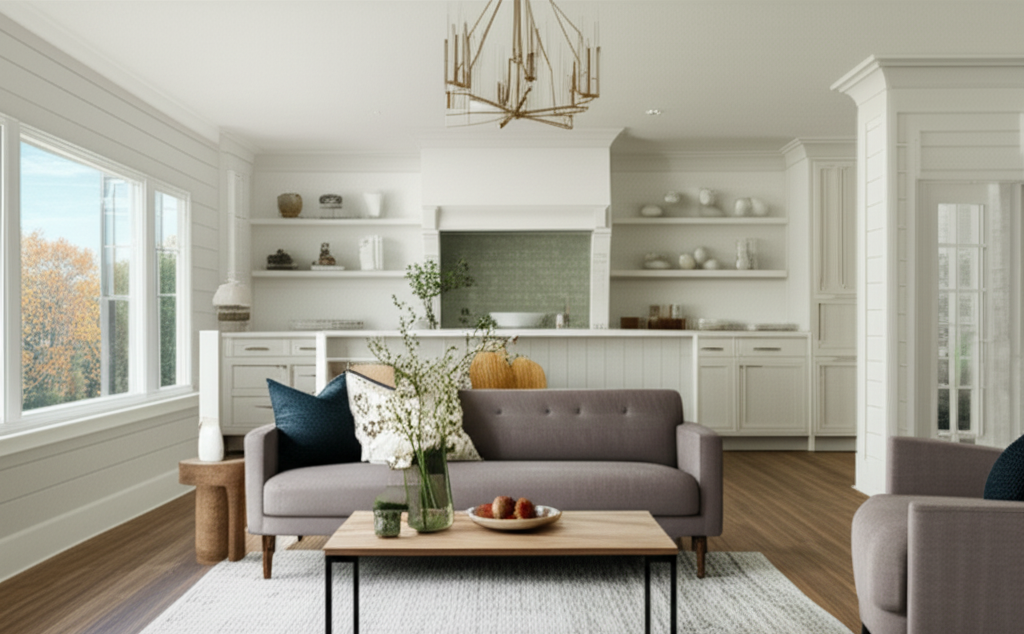Living Room Remodel Guide
Transform Your Home’s Heart into a Stunning Sanctuary
The living room serves as the heart of every home, where families gather to create memories and guests feel welcomed into personal spaces. This central hub deserves thoughtful attention and strategic planning when considering renovation projects that enhance both functionality and aesthetic appeal.
Successful living room remodels balance practical needs with personal style preferences, creating spaces that reflect individual tastes while accommodating daily life activities. From subtle updates to complete transformations, the right approach can dramatically improve home value and daily enjoyment.
Understanding Your Living Room’s Potential
Every living room possesses unique characteristics that influence renovation possibilities and design directions. Architecture, natural light, existing structural elements, and room dimensions all play crucial roles in determining the most effective remodeling strategies.
Professional designers often begin projects by analyzing traffic flow patterns, identifying focal points, and assessing how family members currently use the space. This evaluation reveals opportunities for improvement while highlighting features worth preserving during renovation processes.
Assessing Current Layout and Functionality
Effective living room remodels start with honest assessments of existing layouts and how well they serve household needs. Many homeowners discover that furniture arrangements, rather than structural changes, create the most dramatic improvements in space functionality.
Consider how people move through the room during typical activities like entertaining guests, watching television, or relaxing with family members. Awkward traffic patterns, insufficient seating, or poor lighting often indicate areas where targeted improvements can create significant positive impacts.
Essential Living Room Zones
Identifying Structural Opportunities
Some living rooms benefit from structural modifications that open up spaces, improve natural light, or create better connections with adjacent areas. Popular structural changes include removing non-load-bearing walls, adding windows, or creating open floor plans that connect with kitchens or dining areas.
However, structural changes require professional consultation to ensure safety and compliance with local building codes. These modifications also significantly impact project timelines and budgets, making careful planning essential for success.
Setting Realistic Budgets and Expectations
Living room remodel costs vary dramatically based on project scope, material choices, and regional labor rates. Understanding typical cost ranges helps homeowners make informed decisions about which improvements provide the best return on investment.
| Remodel Type | Budget Range | Key Features | Timeline |
|---|---|---|---|
| Cosmetic Refresh | $3,000 – $8,000 | Paint, fixtures, accessories | 2-3 weeks |
| Moderate Renovation | $8,000 – $20,000 | Flooring, built-ins, lighting | 4-6 weeks |
| Major Remodel | $20,000 – $50,000 | Structural changes, high-end finishes | 8-12 weeks |
| Luxury Transformation | $50,000+ | Custom everything, premium materials | 12+ weeks |
Maximizing Budget Efficiency
Smart budget allocation focuses spending on elements that create the most visual impact and functional improvement. Flooring, lighting, and paint typically provide excellent returns on investment, while custom millwork and high-end electronics can quickly consume budgets without proportional benefits.
Many successful remodels follow the 80/20 rule, spending 80% of the budget on foundational elements like flooring, lighting, and major furniture pieces, while reserving 20% for decorative accessories and finishing touches that personalize the space.
Budget Breakdown by Category
Flooring & Structural
Furniture & Seating
Lighting & Electrical
Paint & Accessories
Popular Design Styles and Trends
Contemporary living room design embraces diverse styles that reflect personal preferences while maintaining timeless appeal. Understanding different design approaches helps homeowners make choices that will remain attractive and functional for years to come.
Modern Minimalist
Clean lines, neutral colors, and uncluttered spaces define this approach. Furniture serves dual purposes, storage stays hidden, and natural light takes center stage.
- Neutral color palettes
- Multi-functional furniture
- Minimal decorative elements
- Emphasis on natural light
Rustic Farmhouse
Reclaimed wood, vintage accessories, and cozy textures create welcoming spaces that feel lived-in and comfortable. Natural materials dominate the design palette.
- Reclaimed wood elements
- Vintage and antique pieces
- Cozy textiles and textures
- Earth-tone color schemes
Industrial Chic
Exposed brick, metal accents, and raw materials combine with comfortable seating to create sophisticated urban environments that feel both edgy and inviting.
- Exposed structural elements
- Metal and concrete materials
- Dark color palettes
- Statement lighting fixtures
Scandinavian Hygge
Light colors, natural materials, and cozy elements create peaceful retreats focused on comfort and well-being. Function and beauty merge seamlessly.
- Light, airy color schemes
- Natural wood and textiles
- Cozy comfort elements
- Functional design focus
Incorporating Current Trends Thoughtfully
While following design trends can refresh living spaces, the most successful remodels balance trendy elements with timeless foundations. Trends work best when applied to easily changeable elements like accessories, throw pillows, or accent walls rather than major structural or furniture investments.
Current popular trends include biophilic design elements that bring nature indoors, mixed metals that add visual interest, and flexible furniture arrangements that adapt to changing needs throughout the day.
You may also like:
Essential Elements of Successful Remodels
Certain elements consistently contribute to successful living room remodels regardless of style preferences or budget constraints. These foundational components create frameworks that support both daily functionality and long-term satisfaction.
Lighting Design Strategy
Layered lighting approaches combine ambient, task, and accent lighting to create versatile environments suitable for various activities throughout the day. Natural lighting assessment helps determine artificial lighting needs and placement strategies.
Many living rooms benefit from multiple light sources that can be controlled independently, allowing family members to adjust illumination for different activities like reading, entertaining, or relaxing. Dimmer switches provide additional flexibility for creating appropriate moods.
Ambient Lighting
Overhead fixtures, chandeliers, and recessed lights provide general illumination for the entire room. Consider multiple circuits for better control.
Task Lighting
Table lamps, reading lights, and under-cabinet lighting support specific activities.
